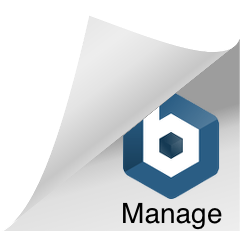By Dan Burns and Howard Schneider
(Reuters) – As the world emerged from pandemic shutdowns in early 2021, a supply chain shock left a lasting imprint on the cost of owning a car in the U.S., spilling out first through prices of used and then new cars and on to replacement parts and finally to loan costs and vehicle insurance rates.
That sustained inflation in the auto industry – vehicle and parts prices are 20% higher than before the pandemic; insurance more than 60% – put a persistent prop under consumer inflation overall, which President Donald Trump may risk reinforcing with 25% tariffs on imported vehicles.
The Trump import tax shock may be hitting a different economy.
Consumers four years ago were flush with cash from pandemic aid, and while vehicle sales have remained below pre-pandemic levels they did climb as the economy fully reopened.
It also may prove a far more persistent force in auto pricing than the pandemic supply-chain issues, which unwound as computer chips and other parts flowed from reopened plants and ports.
With some consumers already stretched and auto loan delinquencies rising, the tariffs may create a confusing new cost and pricing problem whose solution – at least the one Trump envisions – involves a years-long and likely expensive shift towards domestic production.
“The 25% tariff on autos and parts will create immediate price increases and wreak havoc on supply chains,” said Art Wheaton, director of labor studies at Cornell University’s School of Industrial and Labor Relations, and a specialist in transportation industries.
“The U.S. imports about half of the autos we sell and a significant chunk of the parts.”
Wheaton estimates the Trump levies, once the impact of delayed tariffs on imported parts is taken into account, could add $10,000 to $20,000 to vehicle prices.
It is among the more aggressive estimates, but he said “if the end goal is to increase production of parts and assembly in the United States, then the tariffs would likely need to be consistent for decades to allow planning for the shifting supply chain.”
JP Morgan economist Michael Feroli sees it adding to inflation this year and lowering overall growth due to the impact on consumers, an outlook consistent with recent downgraded forecasts from Federal Reserve policymakers.
Tariffs could push the Personal Consumption Expenditures price index, excluding food and energy, 0.3 percentage point higher by the end of the year, to 3.1%, further from the Fed’s headline target of 2%, Feroli said.
“The resulting squeeze on consumer real purchasing power will further weigh on real consumer spending,” and coupled with eroding business sentiment will drive economic output lower by 0.2 percentage point, to a turgid 1.3%.
UNDOING INTEGRATION
New PCE data for February on Friday showed core prices rising by 2.8% versus 2.7% in January, marking another month without progress toward the Fed’s 2% inflation target.
Trump officials say they are engineering a return of U.S.
manufacturing dominance and employment, with hopes production will scale quickly. The risks could also mount fast, and be felt most sharply among middle-class households Trump promised during the campaign to protect from rising prices.
In this case he is attempting with the sweep of his Sharpie to reverse decades of drift towards international integration of automaking, with Japanese and German plants now speckling the U.S. southeast, parts largely made abroad, and the trade pact between Mexico, the U.S.
and Canada allowing different vehicle pieces to be bolted together in different places.
While Trump wants vehicles made “in one location,” the existing system has delivered the very benefit Trump says he is after: From the late 1992 signing of the North American Free Trade Agreement between the U.S., Canada and Mexico until the pandemic supply shock, new car prices barely budged.
That helped keep used vehicle prices in check, too, an important benefit for households where transportation costs are the second-largest budget item at around 17% of spending.
Housing is first at about 33%, according to the most recent federal survey of annual household spending, which covered 2023.
FED THINKING
The tariffs are likely to put Fed officials at least on guard about inflation, which may lead to tighter monetary policy and therefore higher auto loan rates – a blow to consumers beyond any vehicle sticker shock.
In comments this week St.
Louis Federal Reserve President Alberto Musalem said that even if tariffs in theory result in a one-time price shock, there’s the possibility of more persistent effects. As importing businesses adjust, he said, domestic producers may see a wedge to raise prices too.
“Let’s say that beer from Canada is subject to a 25% tariff.
Then you’re going to get some shifting…into Budweiser. And people that sell Budweiser may think, well, maybe I can increase my prices also,” he said.
His research staff estimated proposed tariffs could add 1.2 percentage points to PCE, with more than half coming from the sort of indirect effects that could prove more persistent.
With the Fed keeping monetary policy tight because inflation has been stalled about half a point above target, numbers like that could delay further rate cuts.
The net fallout, however, may take time to discern.
In the competitive market for cars, brand-fickle consumers have some sway, and companies facing tariffs will have to make difficult choices about how much of the added cost to try to pass through to buyers, and how much to absorb through lower profits or by lowering other costs, Richmond Fed President Thomas Barkin said last week.
For a Fed policymaker attentive to both inflation and employment, that raises another scenario of jobs being shed in the auto industry.
“Companies are going to have to face the question of do you try to give it to the consumer, do you take it in margin, or do you lower cost somewhere else in your process,” Barkin said.
(Reporting by Dan Burns and Howard Schneider; Editing by Andrea Ricci)











